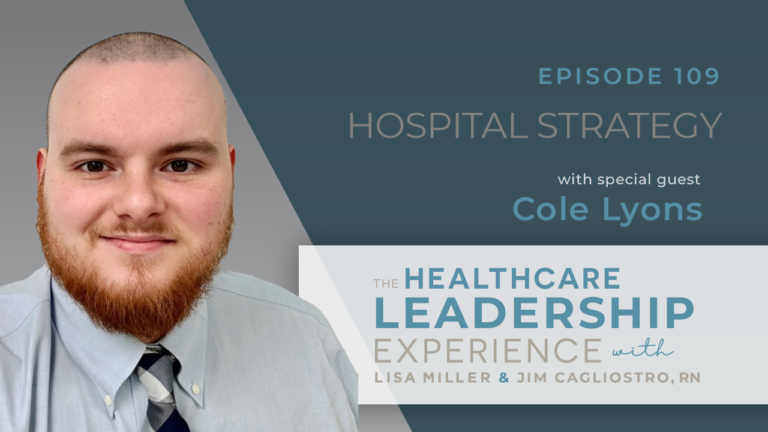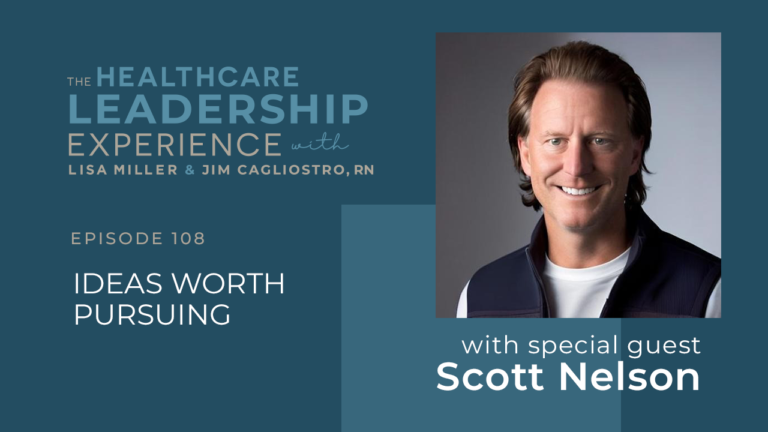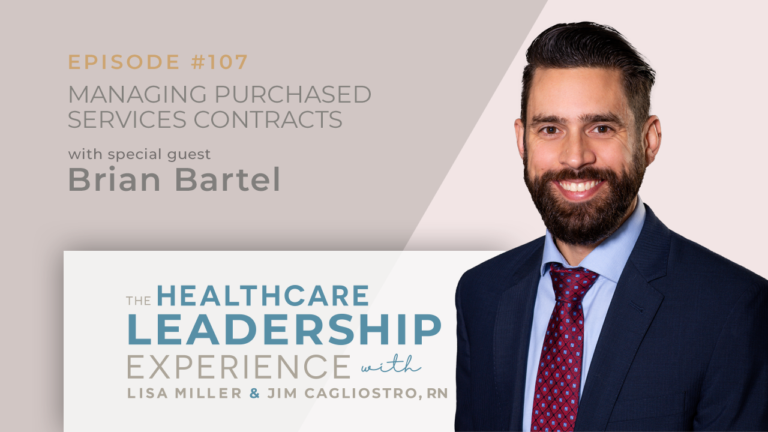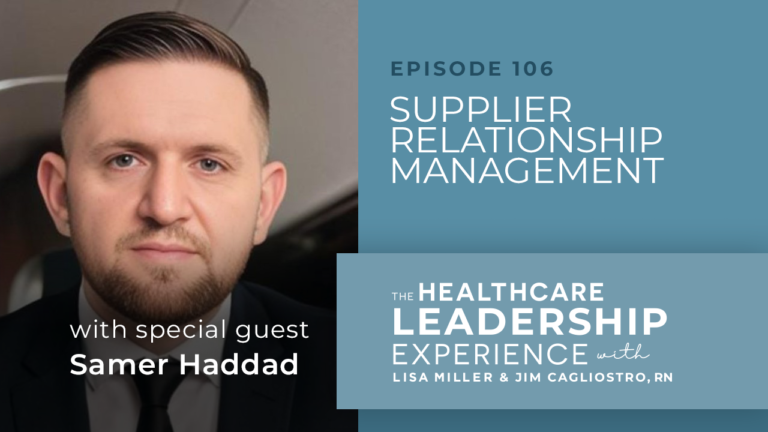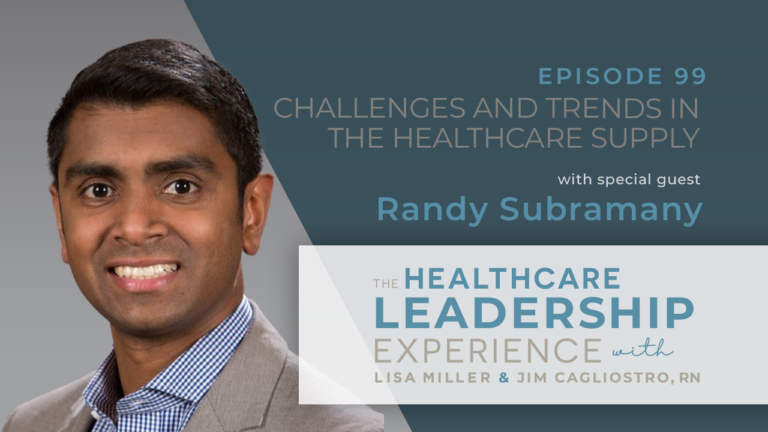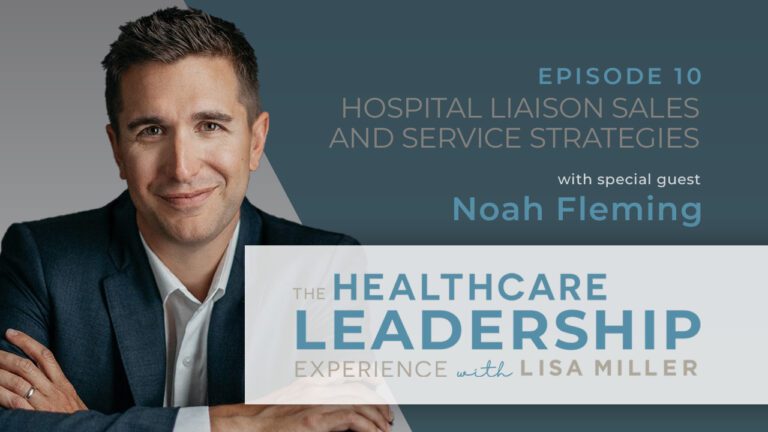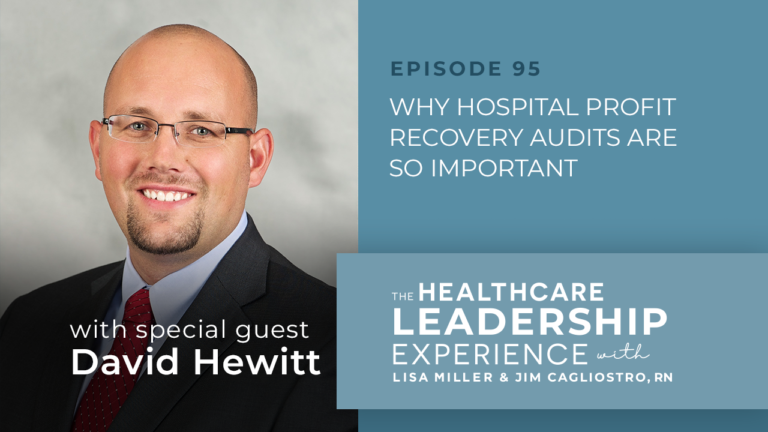Episode Introduction
David explains the law of dissipating structures, how systems, not people, produce 94% of outcomes, and why reorder is a ‘’flight towards chaos.’’ He also explains why the C-suite and frontline employees are different systems in healthcare, highlights the importance of a ‘’pull’’ strategy, and shares why systems improvement means everybody wins.
Show Topics
- Systems, not people, produce 94% of outcomes
- Understanding the law of dissipated structures
- Covid exposed the fragility of systems in healthcare
- Overcoming resistance to change in the C-suite
- 3D change management uses a ‘’pull’’ strategy
- The ‘’golden triad’’ of change agents
- You can’t solve problems with the same thinking used to create them
02:39 Systems, not people, produce 94% of outcomes
David said the work of W. Edwards Deming, and Illya Prigogine was his inspiration for working in systems.
‘’When I first ran into his work I went, oh my gosh. I mean, this whole notion that systems were producing 94% of outcomes and not people, I mean, that was news to me. I had always, like everybody else, assumed that, well, if we just got the people to behave differently we would get the results that we wanted, and it turned out that was not actually the way things work. So I learned about the power of systems. And then at the same time I ran into the work of a brilliant man named Ilya Prigogine, and he had won a Nobel Prize in 1977 for his law of dissipated structures. And so I ended up taking Deming’s work and Prigogine’s work, and maybe a few other bits and pieces out there, and looking at how I could implement that work in my own business. And it turned out to be a real boon for us. We had, at the time, I think about a thousand competitors nationwide, and after we implemented this systems improvement model in my own business, we probably rose into the top 15 in quality, technology, service. So all of a sudden our business was better.’’
05:59 Understanding the law of dissipated structures
David outlined the steps of dissipated structures which lead to ‘’reorder’’ and natural system change.
‘’Well, we are actually experiencing (in healthcare) what happens when the law of dissipated structures is at work anywhere in the universe. And the law of dissipated structures is actually very simple, but it’s incredibly powerful and we don’t get to vote on it, it’s basically doing what it does. And what it does is it dictates that all systems will resist change when the environment is calling out for them to change. So we normally think of resistance to change as not a good thing, but it turns out it’s actually necessary to create systematic change. So it resists change, and in that resistance to change it creates more complexity within the system. That complexity requires more energy coming into the system than the system can dissipate. Now, this stresses the system, and stress causes dysfunction in the system, and as the system continues to resist change, eventually it becomes so stressed that it can’t contain the stress energy anymore and it enters what Prigogine called reorder, and reorder is basically a flight toward chaos. And of course, a flight to chaos means that we can’t even identify it as a system anymore, but the energy is still there from the original system, and now it begins, slowly, generally over time, to come back together into a completely new system. And that completely new system is operating at a higher level of functionality in the changed environment, and is, again, stable in the changed environment, until it again begins to resist change again as the environment changes and goes through the process again.’’
09:51 Covid exposed the fragility of healthcare
David said the law of dissipated structures is at work in healthcare right now.
‘’I think the thing that’s most important for what I would call mainstream healthcare, these are the big medical centers and everything that’s attached to the big medical centers and the center of the macro system, is that the law of dissipated structures is at work in your organization right now, top to bottom. It is most evident in care delivery, and particularly since COVID, because what COVID did is it exposed the fragility and the already stressed care delivery systems, particularly in acute care settings. And what that did, COVID literally pushed some of those acute care settings into reorder. And the thing that is, I think, really important is that stress in systems is passed on to the people who work in those systems, and it’s passed on to them both physically and mentally. And so we start looking at what’s happened to staff, exhaustion, and then on the mental side we’ve got burnout and PTSD, and all sorts of things that are basically driving them off the job. And I think people, management and leadership in healthcare, should be very aware of what is happening down on the care delivery level, because that care delivery level is literally producing those numbers that are so important to leadership. They’re producing the revenue numbers, they’re producing the cost numbers, they’re producing the margins, and unless we go down and we start improving those systems and start saving staff from these toxic systems down there, it’s definitely going to affect those numbers that leadership and management are focused on.’’
13:49 Overcoming resistance to change in the C-suite
David explained why focusing on the numbers is the way to communicate with the C-suite.
‘’So when you talk to the people in leadership, I talk to them about the things that are important to them. I talk to them about profits and, okay, how do you really maximize profits? … So you can go in and you can say, “Well, let’s talk a little bit about how can we maximize profitability, and how can we create huge ROIs for doing something, and how can we do it with the least possible risk to you,” And this is important, “and you not really having to change much of what you’re doing.” You know how it is up there, it’s like, oh my God, they’ve already tried so many of these things. The programs came in, even Deming, you can’t implement it and sustain it in healthcare, and then it was Total Quality Management and Six Sigma and Lean and Lean Sigma and Toyota. None of them can you implement and sustain in healthcare, because all of those programs are not really programs, they’re management models… let’s say, at the top, you have to change your management model, and that has just never happened. It’s just not going to happen. So in speaking to the people in the C-suite, I would talk about the things that are important to them, I would talk about the numbers. In talking to the people that are actually delivering the care, I would talk about what’s important to them. I would say, “Okay, we’re going to be looking at improving the quality of care, improving safety, taking the stress out of the job, reducing burnout, reducing turnover, addressing shortages.” I would also talk to the people at the top about addressing shortages, I mean that’s, I think, a potential existential problem for everybody.’’
17:32 3D change management uses a ‘’pull’’ strategy
David said a pull strategy is 100% voluntary, fixing systems and people at the same time.
‘’I think one of the things that’s really important too is the implementation strategy. If you look at pretty much all of the systems improvement programs that healthcare has attempted to implement, they all use a top-down push strategy. So the top buys into the program at least and says, yeah, we’re going to implement, I’ll make it a lean, and we’re going to have whatever we need to do, but basically we’re going to push it down into the organization. And eventually it’s going to be pushed onto staff, and staff is going to be told, “You’re going to do this.” …and so now we get the pushback. And so what staff does is they know, they just wait it out, it’ll be another flavor of the month, this too shall pass, and eventually the energy that was on getting this new program going starts to fade and things go back to pretty much the way they were. So whatever it is that we implement has to reverse that, and you have to use a pull strategy. So for instance, when we implement 3D change management, it all uses a pull, it’s 100% voluntary, top to bottom. Nobody is asked to do anything they don’t want to do. And the other thing is that in the implementation of the model, it must be healing to the people who implement it. In other words, you’ve got to give them their voice. You’ve got to actually work on the things that are important to them. They have to see that they can be successful in making a difference, and that all is healing. And so the idea that not only are we fixing the systems, we’re fixing the people too at the same time.’’
21:20 The ‘’golden triad’’ of change agents in healthcare
David explained how just three can successfully succeed change.
‘’So we’ve made it so inexpensive that you can pretty much find the budget to get started pretty much anywhere. So it has to be really inexpensive. The ROIs, you’ve got to point out what is the return going to be for this? And then finally, you have to get a commitment from them not to kill the program before it can show success, which is generally within 90 days. So if we just have that from the top, we’re in good shape. Now the bottom, all you need to do is you need to seed it. Now, it’s better if you can go beyond seeding, but to seed it into a hospital, and you really only need three change agents to be trained, you need a change agent nurse, a change agent physician, and a change agent from admin, and titles don’t matter, but just someone who cares about other people and wants to help and wants to do good, and that, we call it the golden triad. We can train those three people and literally seed it into pretty much any healthcare system, and we can start the work and the work will grow organically. You don’t have to do a thing. The success is where it’s been seeded, they’ll talk about it in the hallways, and that sort of thing, and the next thing you know there’ll be other departments saying, well, when do we get to do this? So it’s a totally different way, and notice it’s all a pull strategy. We’re not going into a department and saying, “Okay, you’re going to have to do this now.” I think this is the setup that allows for a 3D, whether it’s problem solving, change management, or systems redesign, to be successful.’’
25:06 ‘’You can’t solve problems with the same thinking used to create them’’
David explained why implementing changes means being willing to expand your mindset.
‘’I think if you were looking at legacy programs, and stuff like that, yes, it is overwhelming for everybody, but I do not think this is overwhelming. I think it’s just a matter of being willing to open your mind a little bit to another possibility that’s completely different than everything else that we have looked at. I would call it from legacy mindsets. I mean, Einstein said, “You can’t solve problems with the same thinking used to create them,” and I think that we have quite a bit of that at the top in healthcare, and it’s not a bad thing, we’re all in the same boat. The mind naturally filters anything unlike itself. It’s a dissipated structure. It’s there in the same thing as the systems. And so it’s not bad, but if we really want to look at expanding and taking the overwhelm away and getting started, then I think we have to expand our mindsets a little bit to include, it’s not overwhelming and it’s actually fairly straightforward.’’
Show Links
Connect with Lisa Miller on LinkedIn
Connect with Jim Cagliostro on LinkedIn
Connect with David Dibble on LinkedIn
Check out VIE Healthcare and SpendMend
You’ll also hear:
If we want to improve outcomes, we’ve got to improve the systems. ‘’It turns out that the physical universe, from the macro, which might be a cluster of galaxies in deep space, to the quantum level, is all systems and subsystems, and in nature, 100% of all the outcomes that we experience are a function of those systems and subsystems.’’
Thinking differently about the C-suite, the ‘’profit maximization system.’’ ‘’Their job is basically to maximize profits and make sure that the financials are good. Now, the people in care delivery aren’t really interested in that that much. They’re different systems.’’
Why team players are vital for success: ‘’If you don’t care about others and if you’re not a team player, you can’t do this work.’’
The law of dissipative structures is not waiting around. ‘’…the thing to remember too is, there’s a little bit of a ticking clock on all of this….and at some point the law of dissipative structures is going to have its way unless we intervene, particularly at the care delivery level for healthcare.’’
Leadership tips: Why we all need to take time out to reflect and expand our awareness. ‘’But in order to go beyond what’s already there, I think we need those moments of reflection, in particular around what are the things we do on automatic that just have not been working.’’
What To Do Next:
- Subscribe to The Economics of Healthcare and receive a special report on 15 Effective Cost Savings Strategies.
- There are three ways to work with VIE Healthcare:
- Benchmark a vendor contract – either an existing contract or a new agreement.
- We can support your team with their cost savings initiatives to add resources and expertise. We set a bold cost savings goal and work together to achieve it.
- VIE can perform a cost savings opportunity assessment. We dig deep into all of your spend and uncover unique areas of cost savings.
- If you are interested in learning more, the quickest way to get your questions answered is to speak with Lisa Miller at lmiller@spendmend.com or directly at 732-319-5700
Episode Transcript
DOWNLOAD THE FULL PDF TRANSCRIPT HERE
CLICK HERE TO OPEN THE FULL TRANSCRIPT
David (00:00):
In the implementation of the model, it must be healing to the people who implement it. In other words, you’ve got to give them their voice, you’ve got to actually work on the things that are important to them. They have to see that they can be successful in making a difference, and that all is healing. And so the idea that not only are we fixing the systems, we’re sort of fixing the people too at the same time.
Introduction (00:28):
Welcome to The Healthcare Leadership Experience Podcast, hosted by Lisa Miller and Jim Cagliostro. Lisa is the founder of VIE Healthcare Consulting and now managing director at SpendMend. Lisa and her team has generated over $1 billion in financial improvements for VIE’s clients since 1999.
Since 2007, Jim has been a registered nurse working in critical care, perioperative services, and outpatient settings at nationally-recognized medical facilities across three states. You’ll hear conversations on relevant and trending topics in healthcare, and much more.
Now, here’s your hosts, Lisa and Jim.
Jim (01:08):
Hi, this is Jim Cagliostro, and you’re listening to the Healthcare Leadership Experience. Today’s guest is David Dibble, founder and CEO of New Agreements, Incorporated. Today we’re going to be talking about a systems plan to address the systems problem in healthcare.
Welcome and thank you, David, for joining us.
David (01:26):
My pleasure, Jim, always love to talk about this stuff.
Jim (01:29):
Great, great. So I always like to begin with our audience learning a little bit about our guest, and you have an interesting background, I was reading up, in electronics and computers, and starting your own businesses, things like that. How did your previous experience prepare you for what you do now, and specifically why healthcare since 2005?
David (01:47):
Great question, I got out of college and started a company with about $5,000 in the back of an old warehouse, and over time we built it to about a $10 million business. We were making high-end, high-tech interconnect devices, a lot of space flight hardware, and so forth. But what happened was, I think it was around 1980, I ran into the work of W. Edwards Deming, who is really the godfather of the whole quality and systems improvement movement, and that got me into the systems stuff as really important stuff, I think particularly as leaders and managers.
Jim (02:29):
Sure. And Deming, that’s a name that I’ve heard before, but I really haven’t looked into that quality and systems, at least in terms of his writings, but that was very influential for you early on?
David (02:39):
Yes. When I first ran into his work I went, oh my gosh. I mean, this whole notion that systems were producing 94% of outcomes and not people, I mean, that was news to me. I had always, like everybody else, assumed that, well, if we just got the people to behave differently we would get the results that we wanted, and it turned out that was not actually the way things work. So I learned about the power of systems.
David (03:10):
And then at the same time I ran into the work of a brilliant man named Ilya Prigogine, and he had won a Nobel Prize in 1977 for his law of dissipated structures. And so I ended up taking Deming’s work and Prigogine’s work, and maybe a few other bits and pieces out there, and looking at how I could implement that work in my own business. And it turned out to be a real boon for us. We had, at the time, I think about a thousand competitors nationwide, and after we implemented this systems improvement model in my own business, we probably rose into the top 15 in quality, technology, service. So all of a sudden, our business was better.
Jim (04:05):
So as you’re sharing that, I know we were talking before we started recording about family. I mean, I read a parenting book years back, and I remember it focused on, you can’t just be about behavior change. I think it was called Getting to the Heart of Parenting. And it really is about fixing, or addressing the system, addressing the heart, rather than just trying to change the surface level things. And you’re making me think of that, where you’re getting deeper to the source of the problem, or the source of the issue.
David (04:32):
Yeah, I did a deep dive into this whole systems thing, and it turns out that the physical universe, from the macro, which might be a cluster of galaxies in deep space, to the quantum level, is all systems and subsystems, and in nature, 100% of all the outcomes that we experience are a function of those systems and subsystems.
Jim (04:58):
Okay.
David (04:58):
And when the human mind gets involved in creating human made systems, such as the workplace or healthcare, then that number drops to around 94%, that’s Deming’s number, but it’s still a big number. And so this idea that wow, we really should be paying attention to how we lead and manage, and taking a systems-based approach to that, because if we want to improve outcomes, we’ve got to improve the systems.
Jim (05:28):
Yeah. Well, I love that perspective. So you’ve mentioned that 94% number, and I do want to read a quote and expound from there, but you’ve shared that 94% of the outcomes we experience in the workplace, good or bad, are a function of the systems in which people work, not the efforts of the people, you’ve mentioned that, so good people can never win against a bad system. And I saw you wrote that, and let’s just jump right in and, ask why is there a need for change? What is wrong with our current approach or our current system in healthcare?
David (05:59):
Well, we are actually experiencing what happens when the law of dissipated structures is at work anywhere, anywhere in the universe. And the law of dissipated structures is actually very simple, but it’s incredibly powerful and we don’t get to vote on it, it’s basically doing what it does. And what it does is it dictates that all systems will resist change when the environment is calling out for them to change. So we normally think of resistance to change as not a good thing, but it turns out it’s actually necessary to create systematic change. So it resists change, and in that resistance to change it creates more complexity within the system. That complexity requires more energy coming into the system than the system can dissipate.
David (07:00):
Now, this stresses the system, and stress causes dysfunction in the system, and as the system continues to resist change, eventually it becomes so stressed that it can’t contain the stress energy anymore and it enters what Prigogine called “reorder”, and reorder is basically a flight toward chaos. And of course, a flight to chaos means that we can’t even identify it as a system anymore, but the energy is still there from the original system, and now it begins, slowly, generally over time, to come back together into a completely new system. And that completely new system is operating at a higher level of functionality in the changed environment, and is, again, stable in the changed environment, until it again begins to resist change again as the environment changes and goes through the process again.
Jim (08:02):
I’m glad you broke that down for me, because when I saw that the law of dissipated structures, I think just that terminology is a little overwhelming for the lay person, but to break down those steps, can you, and this might be impossible to do, but can you say healthcare in the United States, that we are at a point, obviously it’s stressed, obviously there is dysfunction. In your mind can you say, hey, this is where we’re at in this law, or it’s we’re at different points depending on the hospital or the health system we’re working with?
David (08:32):
Different points. When we look at reorder in large systems, let’s say a large system like healthcare, what we see is that the reorder starts on the margins and at the bottom of the macro system and it works its way toward the center and top. So if we look at healthcare, what we see is much more indication of reorder on the margins of healthcare, which are primary care, rural healthcare, underserved healthcare, and we also see a reorder now starting to take place at the bottom, basically in the care delivery systems, with the dysfunction in those care delivery systems, and now the burnout and shortages of staff.
Jim (09:21):
That’s such a hot topic right now because it’s true, it’s a reality that many health systems are facing. So going off of that, would you say there’s a lot that some of these larger systems could learn from those on the margins, the primary care, and the reordering that’s taking place there, is this something that maybe there should be a proactive, I’m assuming, there should be a proactive measure taken by larger systems, say, hey, we don’t want to be forced into this reorder, we want to get ahead of the game. Is that fair to say?
David (09:51):
Yes. I think the thing that’s most important for what I would call mainstream healthcare, these are the big medical centers and everything that’s attached to the big medical centers and the center of the macro system, is that the law of dissipated structures is at work in your organization right now, top to bottom. It is most evident in care delivery, and particularly since COVID, because what COVID did is it exposed the fragility and the already stressed care delivery systems, particularly in acute care settings. And what that did, COVID literally pushed some of those acute care settings into reorder.
David (10:40):
And the thing that is, I think, really important is that stress in systems is passed on to the people who work in those systems, and it’s passed on to them both physically and mentally. And so we start looking at what’s happened to staff, exhaustion, and then on the mental side we’ve got burnout and PTSD, and all sorts of things that are basically driving them off the job. And I think people, management and leadership in healthcare, should be very aware of what is happening down on the care delivery level, because that care delivery level is literally producing those numbers that are so important to leadership. They’re producing the revenue numbers, they’re producing the cost numbers, they’re producing the margins, and unless we go down and we start improving those systems and start saving staff from these toxic systems down there, it’s definitely going to affect those numbers that leadership and management are focused on.
Jim (11:49):
Yeah, you make a great point, and I think, looking at COVID, and I love what you say, COVID exposed the fragility and the stress in the systems. And we saw some hospitals, some healthcare organizations, fare pretty well, or at least respond pretty well to the situation, and we saw others that just shut down, they couldn’t handle. They were already at a point, and then COVID was just that breaking point for them. And so hopefully we can learn from those who did do it well, but we’ll talk a little bit more about that.
Jim (12:21):
If you’re just tuning in, you’re listening to the Healthcare Leadership Experience, and I’m your host, Jim Cagliostro. This show is sponsored by VIE Healthcare Consulting, a SpendMend company, which provides leading edge financial and operational consulting for hospitals, healthcare institutions, and other providers of patient care.
Since 1999, Vie has been a recognized leader in healthcare costs, hospital purchase services, healthcare benchmarking, supply chain management, and performance improvement. You can learn more about VIE Healthcare consulting at viehealthcare.com.
David (12:53):
So David, we’ve talked about change being hard, this resistance to change, I believe that’s a human problem, but it’s also a very real challenge for any organization, especially a large healthcare organization when we’re talking about systems change. How, this would probably be my big question for you, and I’m sure you’ve seen it, how do you create buy-in with hospital leaders and the healthcare workers who have perhaps only known one approach their whole career? How do you create buy-in with this group?
David (13:20):
I think differently. When I look at the people in the C-suite, they’re working, I call it the profit maximization system. Their job is basically to maximize profits and make sure that the financials are good. Now, the people in care delivery aren’t really interested in that that much. They’re interested in delivering good care and taking good care of patients. They’re different systems.
David (13:49):
So when you talk to the people in leadership, I talk to them about the things that are important to them. I talk to them about profits and, okay, how do you really maximize profits? Because the only way you can really maximize profits is by optimizing the systems that are creating the productivity, that’s basically your revenues, and eliminating or reducing costs, which now create your margins. So you can go in and you can say, “Well, let’s talk a little bit about how can we maximize profitability, and how can we create huge ROIs for doing something, and how can we do it with the least possible risk to you,” And this is important, “and you not really having to change much of what you’re doing.”
Jim (14:42):
Yes, that’s the key.
David (14:43):
You know how it is up there, it’s like, oh my God, they’ve already tried so many of these things. The programs came in, even Deming, you can’t implement it and sustain it in healthcare, and then it was Total Quality Management and Six Sigma and Lean and Lean Sigma and Toyota. None of them can you implement and sustain in healthcare, because all of those programs are not really programs, they’re management models. And what isn’t really recognized is that in order to really implement and sustain, unless we call it buy-in, let’s say, at the top, you have to change your management model, and that has just never happened. It’s just not going to happen.
David (15:29):
So in speaking to the people in the C-suite, I would talk about the things that are important to them, I would talk about the numbers. In talking to the people that are actually delivering the care, I would talk about what’s important to them. I would say, “Okay, we’re going to be looking at improving the quality of care, improving safety, taking the stress out of the job, reducing burnout, reducing turnover, addressing shortages.” I would also talk to the people at the top about addressing shortages, I mean that’s, I think, a potential existential problem for everybody. But you have to talk to them.
David (16:05):
Now, the nice thing about doing systems improvement work is everybody wins. The people in the C-suite win. They don’t have to change much of what they’re doing, but all of a sudden, they’re going to be more profitable. The people delivering the care, they’re delivering better care with less stress and better outcomes. And patients win because they’re getting better care and better access. So I feel like we’re really coming up to one of those points where the law of dissipated structures is probably going to start opening some eyes, both at the top and where the care is being delivered, to the fact that we have to take a different approach. We’ve got to take a systems-based approach or we’re going to have to face the consequences.
Jim (16:48):
You make such a great point, and I think it’s reminding me of when I’m working on the floor and hear, “We have to reduce waste, or we have to cut costs,” and right away those at the bedside that are caring for patients are saying, “Okay, this is going to make my job harder.” Or if there’s, on the flip side, “Hey, we have to improve care,” then those in the C-suite are going to historically have said, “Oh, this is going to cost us more money.” But if you step back and you take this systems-based approach and you say, just like you said, you need to speak to what’s important to them, to whoever you’re talking to. But if you look at the system, it’s not mutually exclusive, both can be improved, but you have to look at a system-wide approach. I love how you explain that.
David (17:32):
Yes, and I think one of the things that’s really important too is the implementation strategy. If you look at pretty much all of the systems improvement programs that healthcare has attempted to implement, they all use a top-down push strategy. So the top buys into the program at least and says, yeah, we’re going to implement, I’ll make it a lean, and we’re going to have whatever we need to do, but basically we’re going to push it down into the organization. And eventually it’s going to be pushed onto staff, and staff is going to be told, “You’re going to do this.” And of course, what happens when we push?
Jim (18:11):
Oh, we push back.
David (18:14):
Of course, and so now we get the pushback. And so what staff does is they know, they just wait it out, it’ll be another flavor of the month, this too shall pass, and eventually the energy that was on getting this new program going starts to fade and things go back to pretty much the way they were. So whatever it is that we implement has to reverse that, and you have to use a pull strategy. So for instance, when we implement 3D change management, it all uses a pull, it’s 100% voluntary, top to bottom. Nobody is asked to do anything they don’t want to do. And the other thing is that in the implementation of the model, it must be healing to the people who implement it. In other words, you’ve got to give them their voice. You’ve got to actually work on the things that are important to them. They have to see that they can be successful in making a difference, and that all is healing. And so the idea that not only are we fixing the systems, we’re fixing the people too at the same time.
Jim (19:24):
Yes, I’m a huge supporter of making sure employees feel valued, making sure that they’re able to take ownership, and not just this, like you said, we’re going to push something onto you and deal with it. But it’s no, I’m a part of the team, I’m a valued member of this organization, that’s a big part. I like how you use that terminology in terms of healing.
David (19:43):
So you just mentioned it, that 3D change management, and I did want to ask you about that, or I saw 3D problem solving on your website. How does that approach help hospital leaders address system issues? And I know you’ve talked about that, but I think I want to ask, how does it help leaders address system issues and serve patients better while maintaining that financial sustainability that we were just talking about?
David (20:08):
Yes. Well, I think that’s actually critical that both things happen at the same time, because it can’t be one or the other, it must be both. So I would say that the first thing is you have to get the people at the top to agree to minimal support. Now, this isn’t the big buy-in that you needed before, that never happened anyway, this is minimal support. And so in order to implement from the top the minimal support must include, there must be minimal oversight. So we’ve got to have oversight from the top where we can come to them and show them the progress that we are making, we can ask for any advice on course correction, we can tell them what support we need, which will be minimal. So oversight. The second thing is resources. There’s a minimal amount of resources that are necessary, and this is a good thing because if you need a lot of resources, you’re going to probably have to go through the whole budgeting thing, and we know what a black hole that can be.
Jim (21:20):
Yes.
David (21:20):
So we’ve made it so inexpensive that you can pretty much find the budget to get started pretty much anywhere. So it has to be really inexpensive. The ROIs, you’ve got to point out what is the return going to be for this? And then finally, you have to get a commitment from them not to kill the program before it can show success, which is generally within 90 days. So if we just have that from the top, we’re in good shape.
David (21:52):
Now the bottom, all you need to do is you need to seed it. Now, it’s better if you can go beyond seeding, but to seed it into a hospital, and you really only need three change agents to be trained, you need a change agent nurse, a change agent physician, and a change agent from admin. And titles don’t matter, but just someone who cares about other people and wants to help and wants to do good, and that, we call it the Golden Triad. We can train those three people and literally seed it into pretty much any healthcare system, and we can start the work and the work will grow organically. You don’t have to do a thing. The success is where it’s been seeded, they’ll talk about it in the hallways, and that sort of thing, and the next thing you know there’ll be other departments saying, well, when do we get to do this?
David (22:44):
So it’s a totally different way, and notice it’s all a pull strategy. We’re not going into a department and saying, “Okay, you’re going to have to do this now.” I think this is the setup that allows for a 3D, whether it’s problem solving, change management, or systems redesign, to be successful.
Jim (23:02):
I love how you explain that as a pull strategy, not a push. And you mentioned the three individuals, or that triad. Generally, I mean, the word that comes to mind is champion, I know that’s maybe older language, would you say it’s comparable to having a champion? And I know you said title doesn’t matter, but at least someone that’s respected among their peers, would that be fair to say? Or influential at least?
David (23:24):
Yeah, a matter of fact, you know what’s very interesting, Hewlett-Packard did a very thorough investigation of what leadership was. So they went out and they just did, God, they just spent a lot of time trying to figure this out, and in the end they found out that leaders are people that people go to. And so it doesn’t matter about the title, doesn’t matter about any of that stuff, it’s people that people go to. And I would say that those are the people that you would want to have in your Golden Triad, people that are respected, people that people go to, people that care. There’s another thing, if you don’t care about others and if you’re not a team player, you can’t do this work. And so we’ll often, when we’re putting a team together, we’ll actually look and see, okay, who are the team players? Who are the people that care about others and will be willing to come in and put the good of all ahead of their own?
Jim (24:29):
I’m sure you’ve heard that quote, that people don’t care how much until they know how much you care, but in this case that’s extremely important. So I think when we talk about this it can be overwhelming, for hospital leaders, for those at the bedside. What is the overall goal, maybe big picture, that you would want people to remember in terms of implementing systems change, or really any major change, to help speed up systems improvement? Is there a big picture message or a goal that you want people to keep in mind when you’re trying to implement these changes?
David (25:01):
I would start off and say that it is not overwhelming.
Jim (25:04):
Okay.
David (25:06):
I think if you were looking at legacy programs, and stuff like that, yes, it is overwhelming for everybody, but I do not think this is overwhelming. I think it’s just a matter of being willing to open your mind a little bit to another possibility that’s completely different than everything else that we have looked at. I would call it from legacy mindsets. I mean, Einstein said, “You can’t solve problems with the same thinking used to create them,” and I think that we have quite a bit of that at the top in healthcare, and it’s not a bad thing, we’re all in the same boat. The mind naturally filters anything unlike itself. It’s a dissipated structure. It’s there in the same thing as the systems. And so it’s not bad, but if we really want to look at expanding and taking the overwhelm away and getting started, then I think we have to expand our mindsets a little bit to include, it’s not overwhelming and it’s actually fairly straightforward.
Jim (26:14):
You remind me of something I tell my kids all the time, and that’s work smarter, not harder. And sometimes it is a matter of we need to change our approach or change, and it’s not necessarily going to be harder, it’s just a different way of approaching it.
David (26:26):
Yeah, exactly. And the thing to remember too is, there’s a little bit of a ticking clock on all of this, because the law of dissipative structures is not waiting around, and at some point, the law of dissipative structures is going to have its way unless we intervene, particularly at the care delivery level for healthcare. So I do think there’ll be early adapters, but I think the early adapters are going to have a much easier time of it than the ones that don’t adapt and take a system-based approach, particularly in the care delivery area.
Jim (27:06):
Sure, sure. Well, you’ve definitely encouraged me to look more into Deming and some of his writings.
I like to ask our guests, if you’d share any words of wisdom that you’ve learned throughout your career to anyone in the healthcare leadership space, or anything that has gotten you through some rough patches, or anything that’s established your mindset in terms of healthcare leadership, anything you’d like to leave with our audience as we finish up here David?
David (27:29):
Yes, I would say to sit quietly and see if you can pull yourself into a little bit of awareness around whatever it is that you have been doing over and over expecting a different result, because we’re going to have to get beyond that, and the only way we can get beyond it is through expanding our awareness somewhat. In other words, right there. I mean, just taking a quiet moment or two and just really reflecting on what is the thinking that’s gotten you to the current state? The mind is creative, and it would be really nice if we had some say in what it’s creating.
Jim (28:15):
Yeah, oh yeah, that’s good.
David (28:19):
And so yeah, having a little awareness, because the mind normally runs on preschool, and it spins out our lives and we get what we get. But in order to go beyond what’s already there, I think we need those moments of reflection, in particular around what are the things we do on automatic that just have not been working, and would we be open to going beyond that?
Jim (28:44):
That’s great. And that’s so insightful, I think not just for healthcare, but just for life in general, but wow, that could really have an impact in healthcare today.
Thank you so much, David, for being on the show, and thank you to our listeners who spent time with us today.
If you have any questions about VIE Healthcare Consulting, a SpendMend company, or if you want to reach out to me or Lisa Miller, you can find us on LinkedIn. You can also find David Dibble is incredibly active on LinkedIn, so please follow him.
We at VIE love helping hospitals save money and enhance the patient experience, and we’re hoping that today’s episode, I know today’s episode gave you some new insights or ideas to consider and use in your career and your own healthcare organization.
David, thank you again for being a guest today.
David (29:26):
Such a pleasure, Jim, enjoyed every minute.
Speaker (29:30):
Thanks for listening to The Healthcare Leadership Experience Podcast. We hope you’ve enjoyed this episode. If you’re interested in learning new strategies, best practices, and ideas to utilize in your career and healthcare organization, check out our website at thehealthcareleadershipexperience.com. And oh yeah, don’t forget to rate and review us, and be sure to join Lisa and Jim next time on The Healthcare Leadership Experience Podcast. Thanks again for listening.





